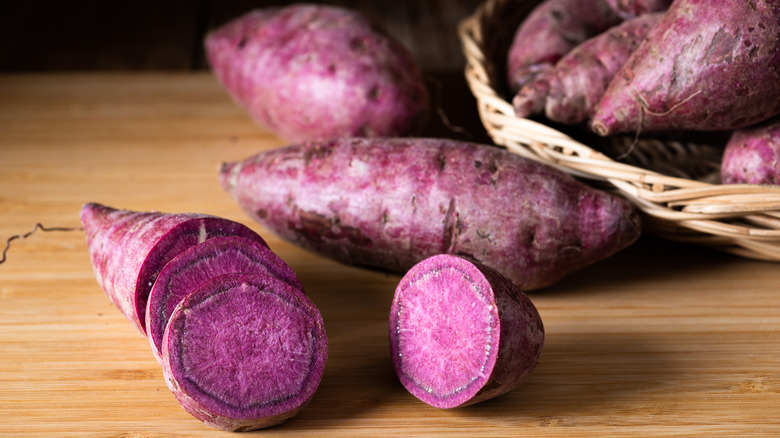Why You Should Start Eating Blue Potatoes
Blue potatoes might sound like something straight out of science fiction, but they are a real thing. Blue potatoes sometimes look purple, and they get their color from anthocyanin pigments in their skins. This pigment happens to be the same one that gives eggplants, concord grapes, and red cabbage their color. Blue potatoes originated in South America, and there are several varieties of them, according to the University of Illinois.
Because they contain anthocyanins, blue potatoes are a powerful antioxidant. In fact, the darker the color, the more beneficial the plant, according to Eating Well. One medium potato with the skin contains 3 grams of fiber and 24% of the recommended daily intake of vitamin C (via Eating Well). The same serving even provides 4 grams of protein. They also have more potassium than a banana, according to Healthline. Blue potatoes also include other nutrients including copper, manganese, and iron.
They provide several health-boosting benefits
The antioxidant qualities of blue potatoes makes them an excellent choice if you are looking to improve your blood pressure. A study showed that extract from one variation of blue potatoes, the purple sweet potato, lowered blood pressure similar to a popular blood pressure medication (via Eating Well). Blue potatoes also have a lower glycemic index, which means they won't cause an insulin spike like many foods that have carbohydrates. This is likely due to their polyphenol content, per Healthline. These colorful tubers might also help fight inflammation, which could help slow cancer growth. Research on rats showed that the liver and kidneys benefited from the anti-inflammatory compounds in blue potatoes.
If you're looking to get the most out of blue potatoes, how you cook them matters. You can bake, stir-fry, or boil them. Stir-frying results in a 60% loss of antioxidants, while baking them leads to a 22% loss. Boiling retains the most antioxidants, losing only 8% of them, according to Eating Well.


